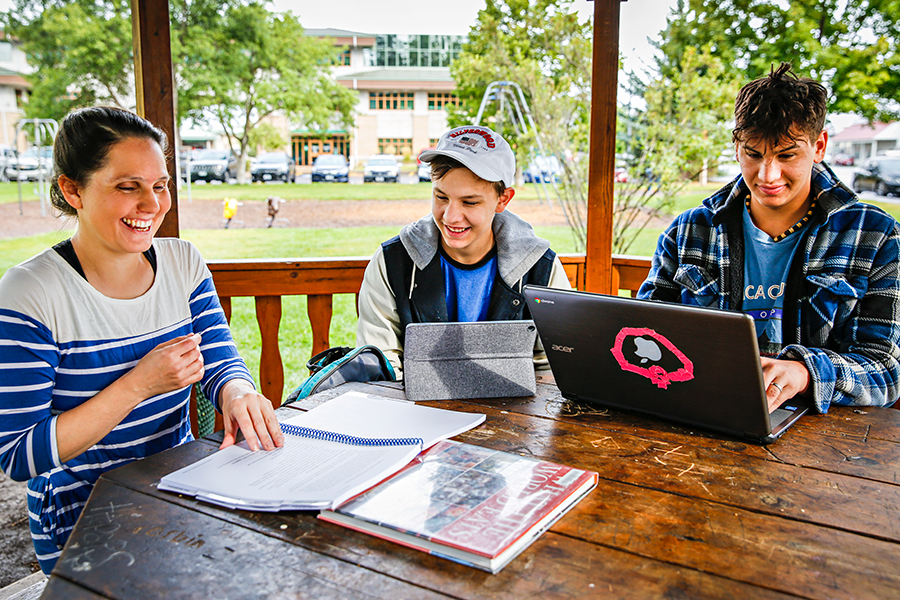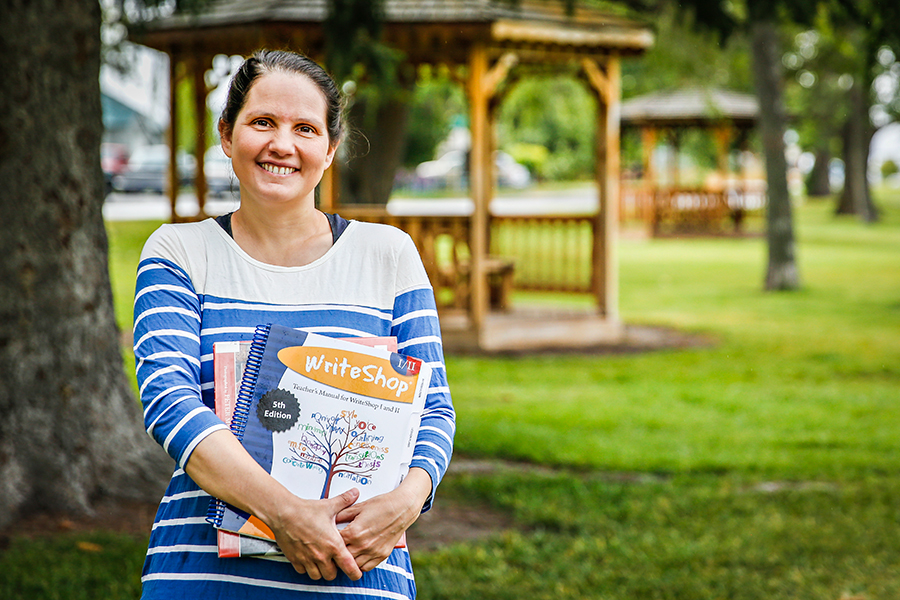Flathead County Flooded with New Homeschool Registrations
Huge spike reflects national trend amid pandemic; homeschool advocates trying to guard against ‘educational neglect’ by discussing the responsibilities with new families
By Myers Reece
Over the last month-plus, Martha Artyomenko, who facilitates Facebook and email groups for local home educators, has been swamped with families newly seeking to homeschool their children in the wake of the pandemic.
Their reasons vary: health and safety worries, concerns over school policies such as mandatory face coverings, anxiety over disruptions to their children’s education if schools shut down, difficulties with remote learning in the spring, and any number of uncertainties accompanying the school year now underway.
“I’ve been adding on our Facebook group 45 to 50 new people every week,” Artyomenko said. “It’s been a little intense trying to help educate people about homeschooling.”
Part of educating parents is asking: Are you sure you want to do this? Artyomenko wants families to fully understand the responsibilities and work that homeschool entails as they make the switch.
“I tell them, ‘You need to consider it’s like taking on a second job or a third job, depending how many you work,’” she said. “You can’t just hand your kids books or an online program and think they can do it all alone. They’re going to need a facilitator. If you can’t do that, you’re going to have to plan to hire somebody to help you.”
Jack Eggensperger, superintendent of schools for Flathead County, said his office has been flooded with homeschool registrations in recent weeks, sharply increasing figures in a county that already leads the state in homeschool enrollment. The office received 321 new homeschool registrations in August alone, and the secretary still had a “big pile that she’s processing” as of Sept. 1.
“They come in every day,” Eggensperger said, adding that he’s heard similar stories from other superintendents in Montana. “It’s a huge spike, and it’s pretty widespread throughout the county.”
The explosion in new homeschool registrations reflects a national trend. A recent Gallup survey found that the percentage of parents nationwide who say they are homeschooling their children this year has doubled, from 5% to 10%.
The Gallup poll distinguished “home schooling from distance learning provided by a school in which they are enrolled,” as does Flathead County. Students who are still enrolled with a school but have chosen remote learning aren’t counted in the numbers, only families who have unenrolled, or weren’t previously enrolled at a school or registered with the county, and are now registered to homeschool.
Artyomenko noted that the Facebook and email groups have also welcomed a number of parents whose school-enrolled students are remote learning, but not homeschooling. The parents are often seeking advice and support from homeschool families accustomed to the learning environment. The Facebook page has jumped from about 1,000 members earlier in the summer to more than 1,700.
Artyomenko and fellow administrators of the Facebook and email groups have been posting informational videos for families covering topics such as finding curriculum and resources available in the community. The group also had a representative from Flathead Valley Community College talk about Running Start for high school students.
Artyomenko and others also coordinate twice-monthly support group meetings at a local church, and teach enrichment courses for homeschool families interested in extracurricular pursuits such as book clubs and dance classes. There’s also a separate Flathead Valley Home School Athletic Association competitive sports program for kids grades 5-12 that fields volleyball and basketball teams.
Homeschool students have to abide by the same health guidelines for activities as students at public and private schools, including face coverings, and Artyomenko said there are various ideas circulating to promote safe interaction to guard against isolation. She said, despite common misconceptions, homeschool students regularly gather for group activities and at places such as the library.
“We’re trying to be creative to connect with people,” she said, mentioning outdoor exercise classes as a possibility. “We want healthy interaction, but it’s a balance, because no one wants to do anything that would be unsafe.”

Moriah Sullivan’s son would have been a sophomore at Columbia Falls High School this year but opted to switch to homeschooling due to major changes in the school environment, especially socially. The family also worried about the educational repercussions of “flip flopping back and forth” in the event of COVID-related school closures and reopenings.
Sullivan already homeschools her younger three kids and says she’s a fan of both public school and homeschool, depending on the child’s needs. In this case, she feels that her son, judging by the spring remote instruction experiment, learns better with hands-on, in-person teaching than online, and also that she can provide more oversight.
“Now mom is going to be able to keep him accountable, and we’re doing it together,” she said.
But Sullivan said homeschool will be much different this year in the valley. One reason is that the pandemic has impacted a lot of extracurricular opportunities, including canceling or casting uncertainty on activities such as band, theater and choir.
Moreover, her homeschool cooperative Upschool, a nonprofit, has decided not to hold its usual weekly in-person instruction groups. Other local homeschool cooperatives have made similar decisions, although others are continuing to meet, Sullivan said.
“Our ability to socialize and do a lot of the things that are important to us has really been affected,” Sullivan said.
Another factor altering the homeschool landscape is the sheer number of new registrants.
“For existing homeschoolers, all of the classes are full,” she said. “There are a lot more homeschoolers to support and less resources to support them with. That’s a big adjustment. And a lot of them are people who need a lot of support because they haven’t done it before.”
Eggensperger said major breakthroughs in COVID-19 conditions would likely lead to a significant reenrollment in brick-and-mortar schools, although that can only be done by semester.
“If we see a vaccine and the mask requirement goes away, I think those numbers will really decline,” he said.
Sullivan also points out that if homeschool students don’t take specific accredited classes, they would be behind their peers upon reenrolling because their coursework wouldn’t be counted. Her son isn’t taking accredited courses because she says they aren’t much different than remote learning in their lack of flexibility and hands-on teaching.
“We had to make the choice: ‘Do you want to be homeschooled for the rest of high school?’” she said. “He decided that he’s going to be homeschooled for the rest of high school.”
In addition to the work involved with homeschooling, Artyomenko also educates parents on the costs of buying books, online learning programs and other necessities, perhaps computers or additional devices and sufficiently high-speed internet.
Artyomenko has homeschooled all four of her children, two of whom are still in the house as high school students. She touts the benefits of the model’s one-on-one intimacy and adaptability to accommodate each student’s specific needs, but only when executed properly, and she hopes to help set the new wave of homeschool converts on the right path.
“I’m a fan of homeschooling, but I also like to see it done right,” she said. “I’ve seen a lot of neglect, and that’s one of the reasons I do what I do. I want to see it done right so we’re not seeing educational neglect.”